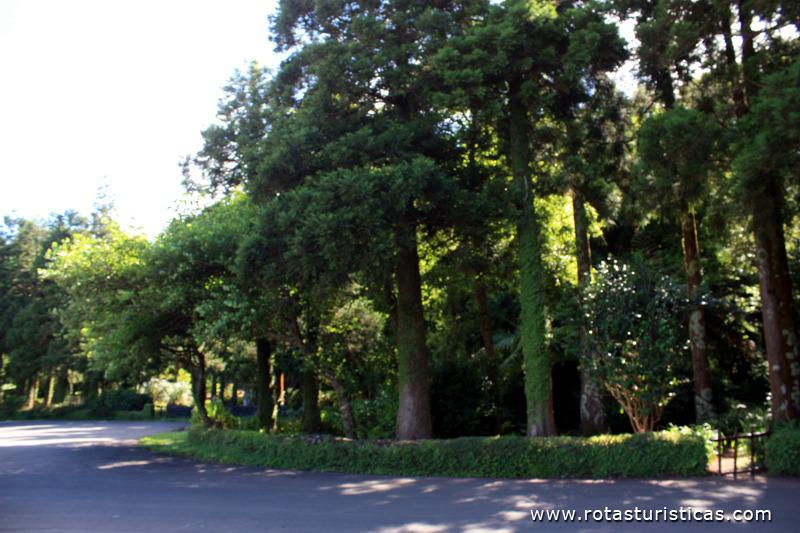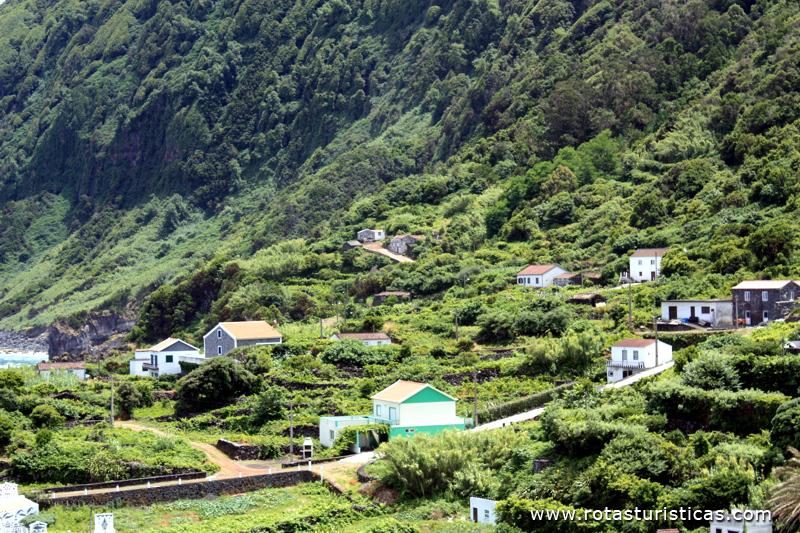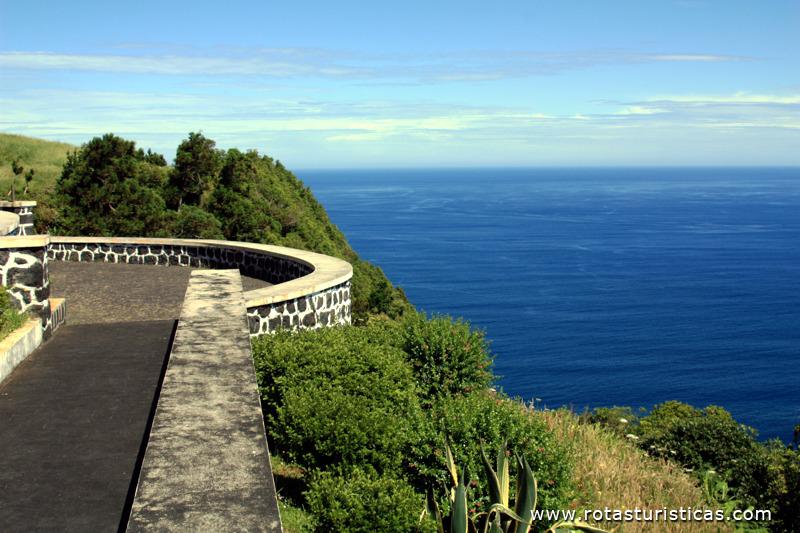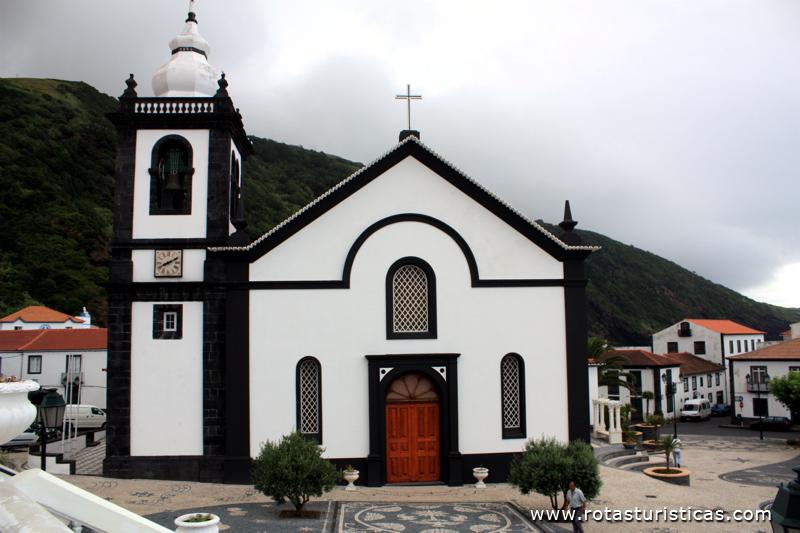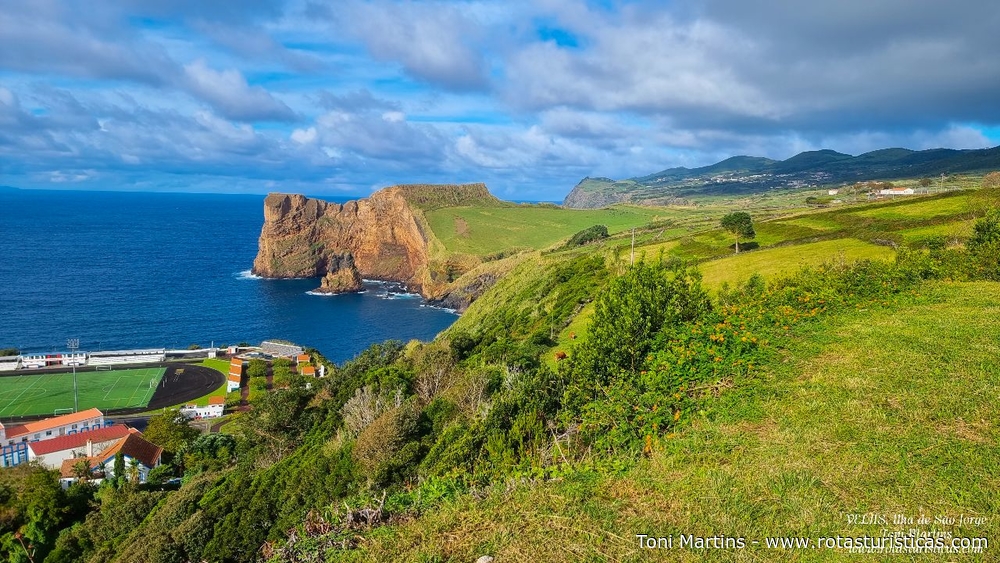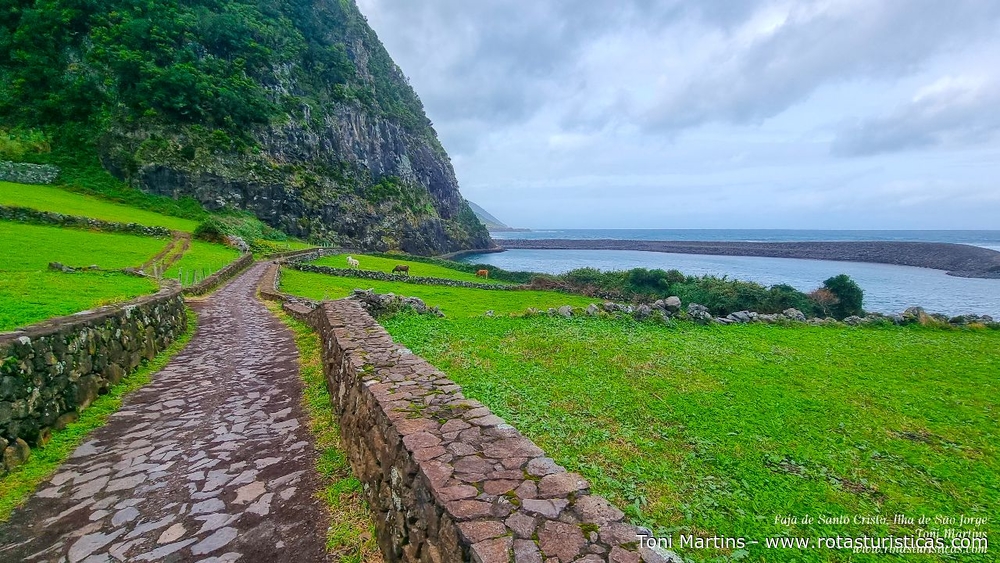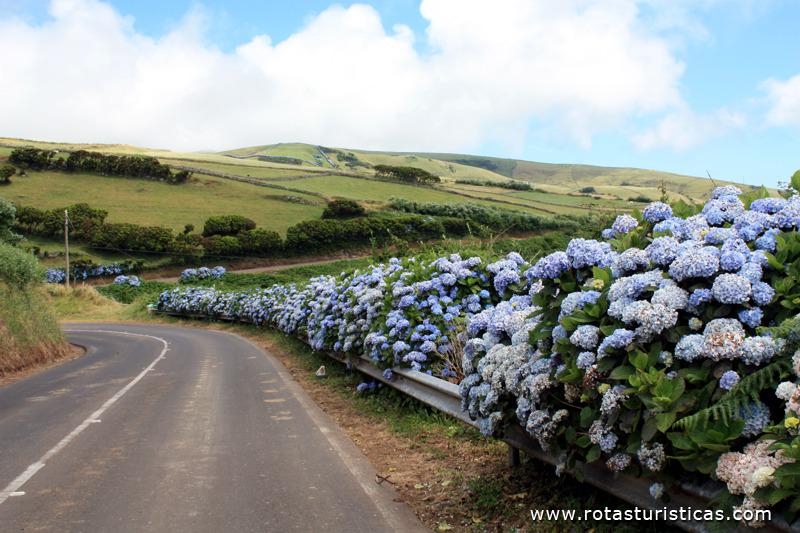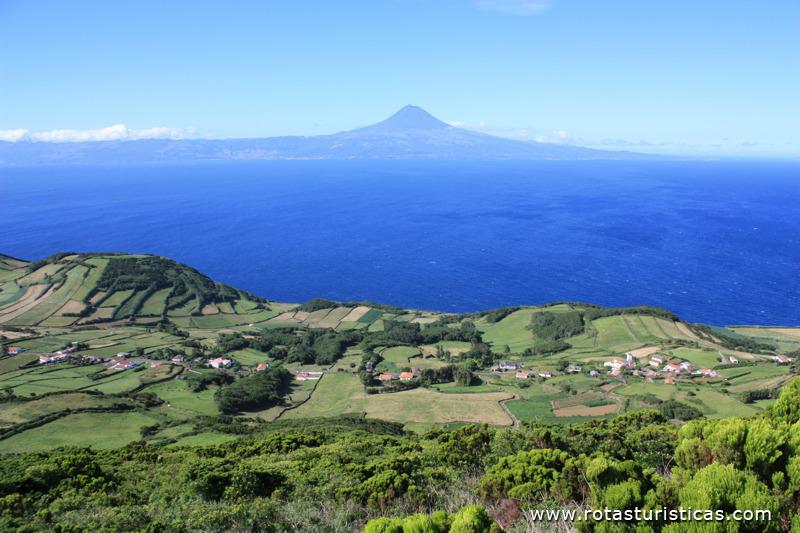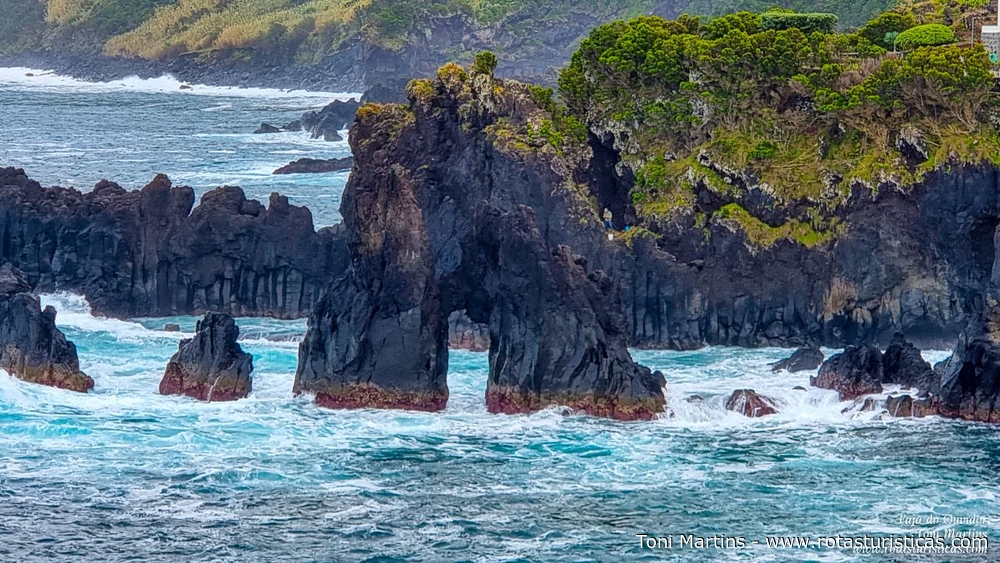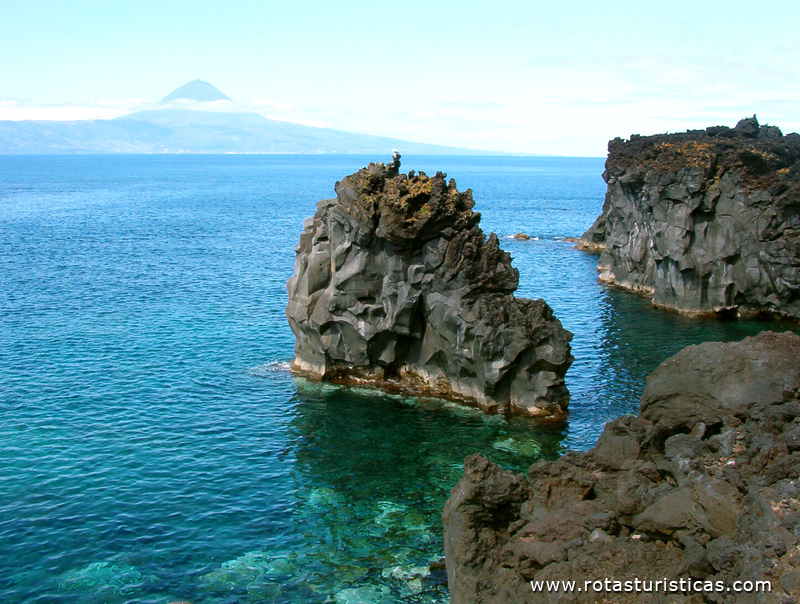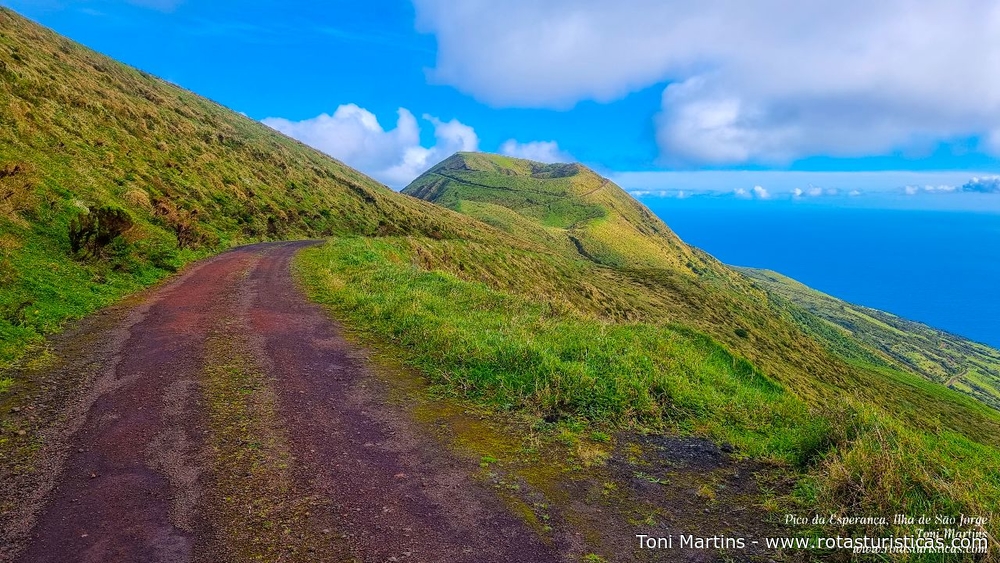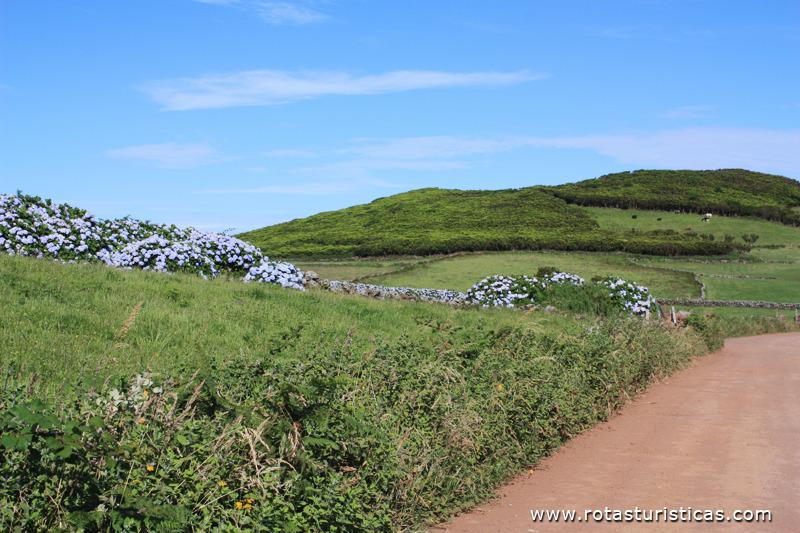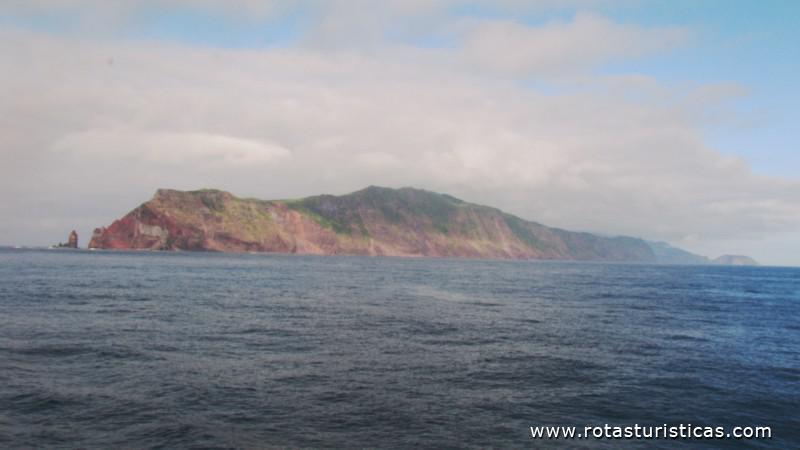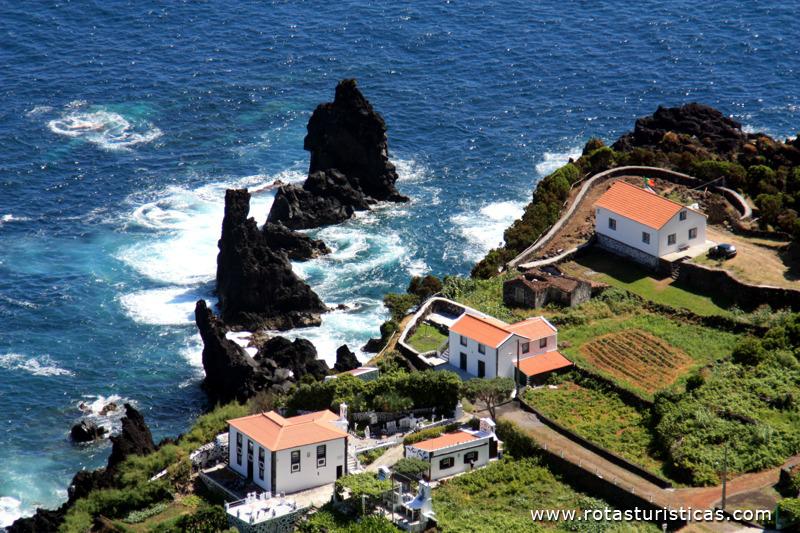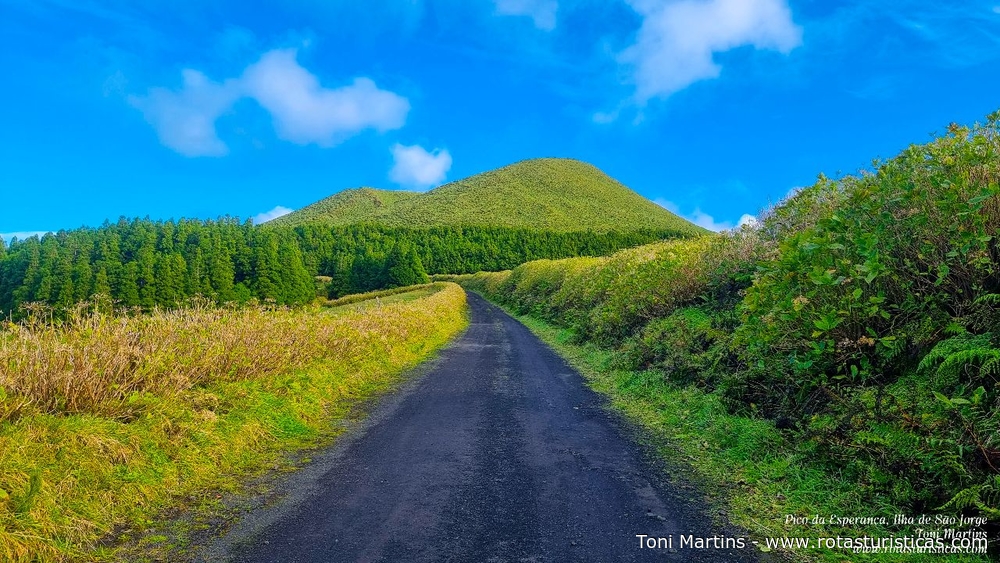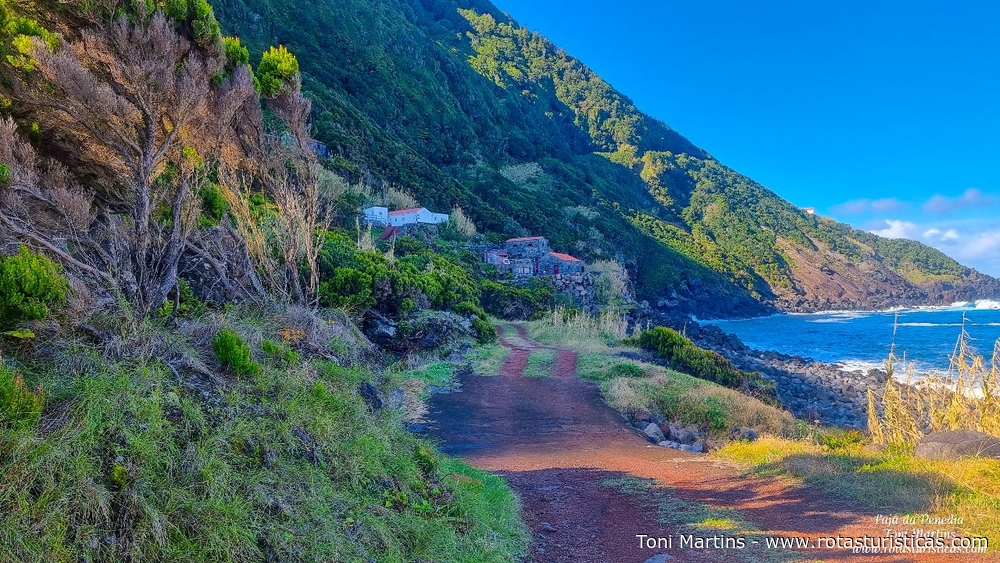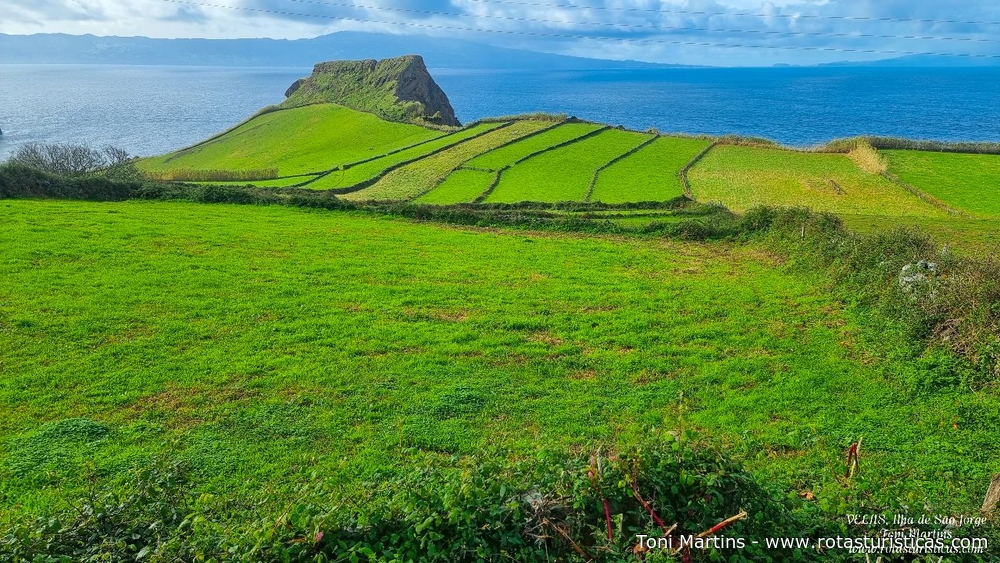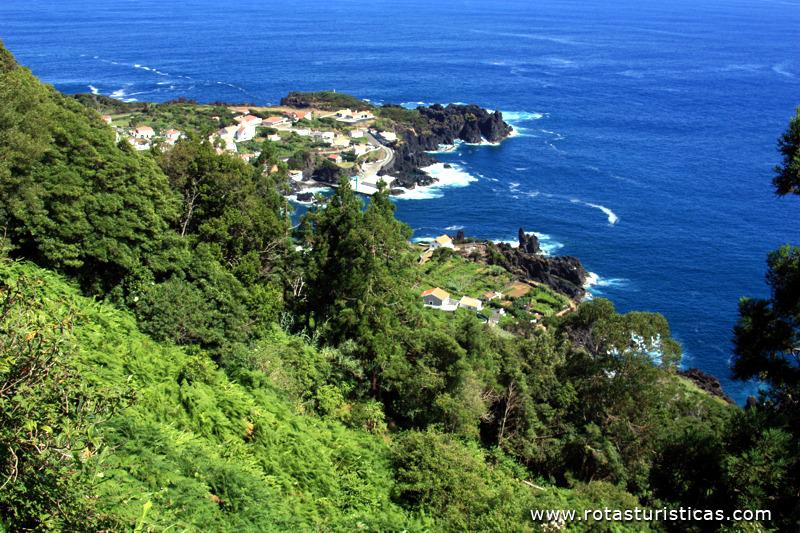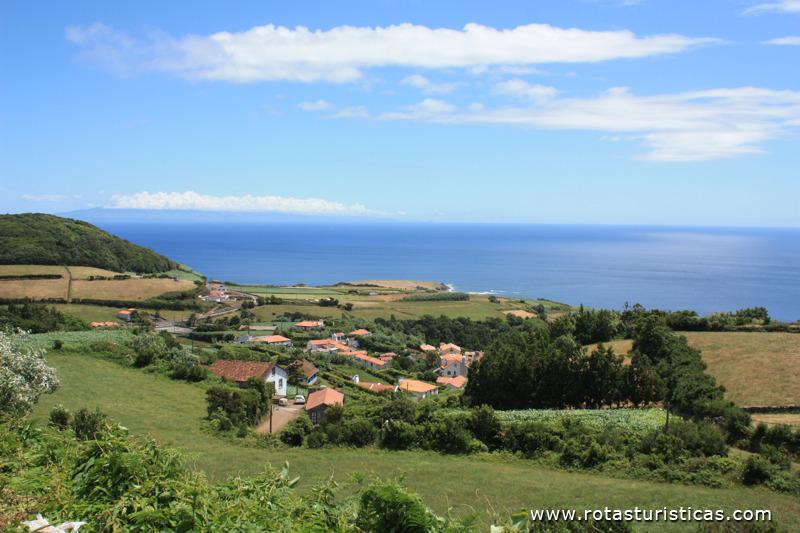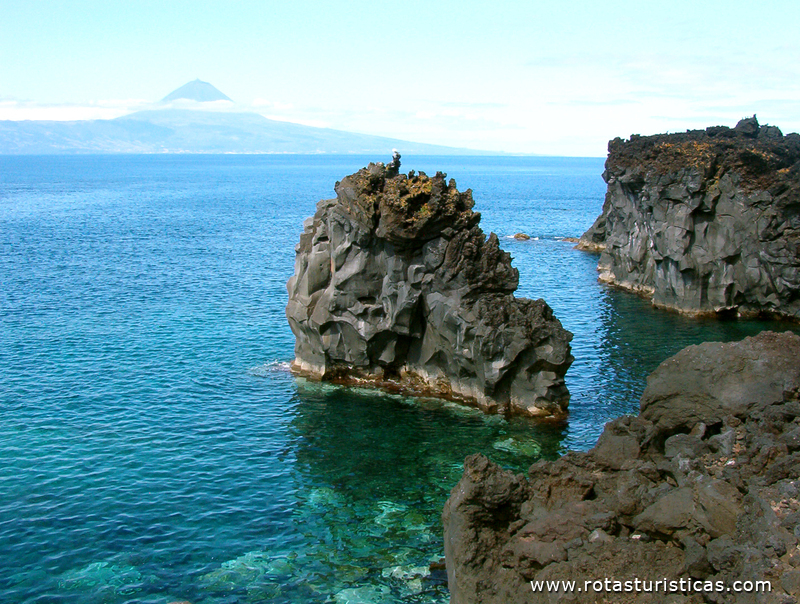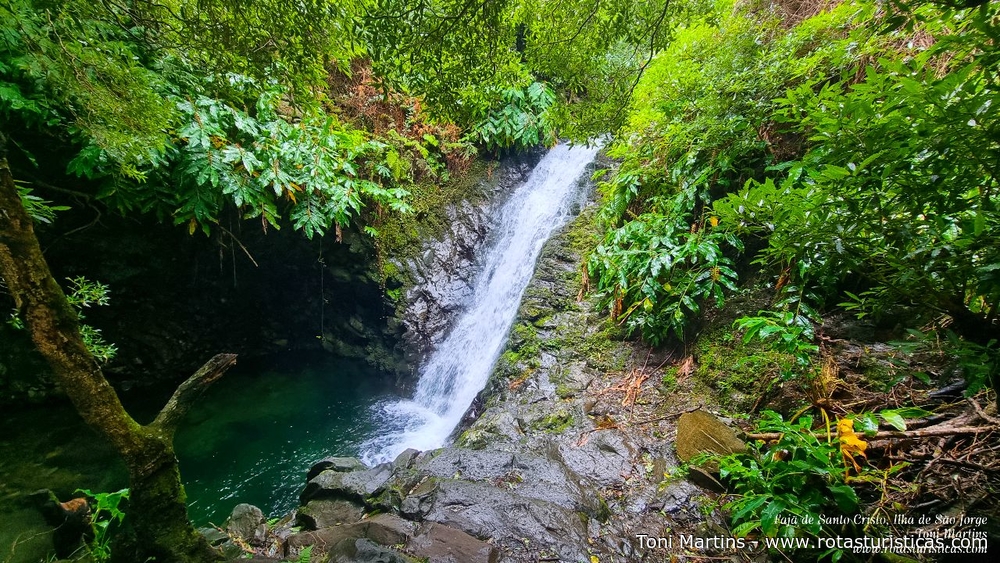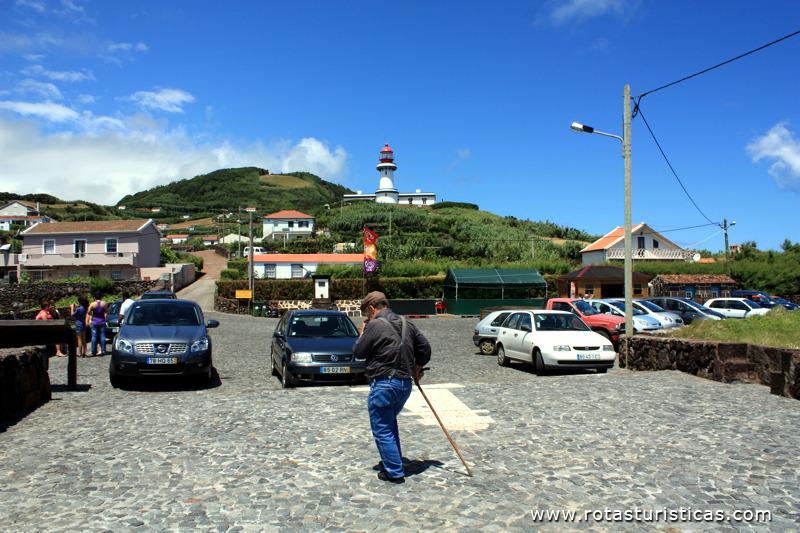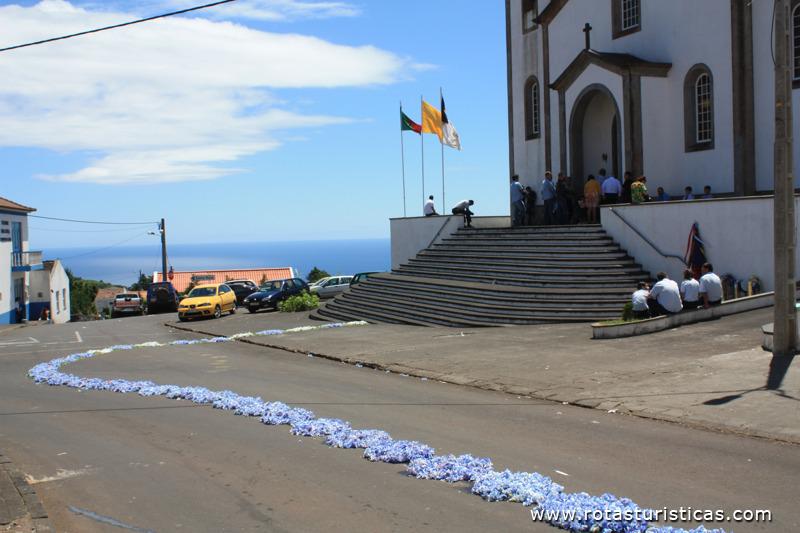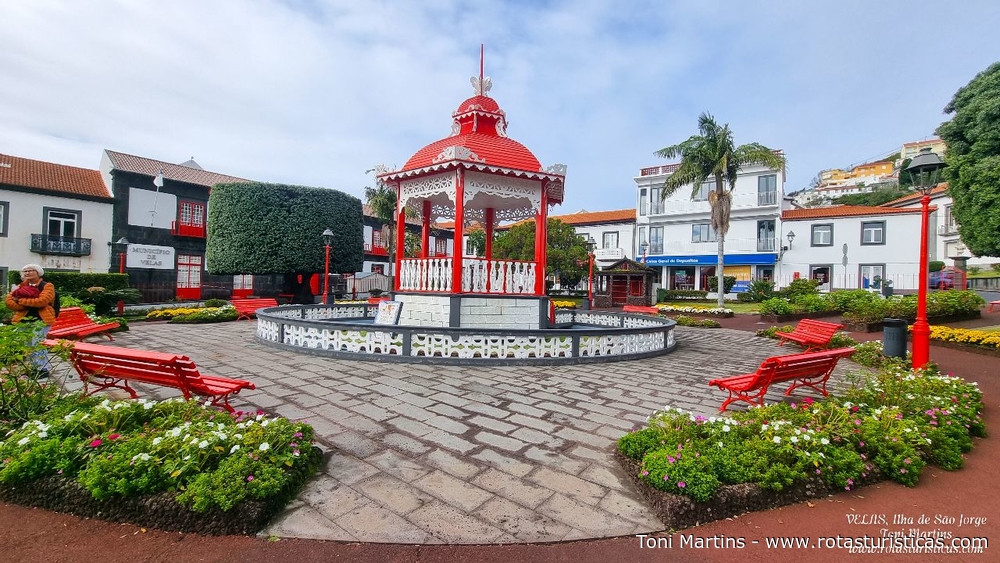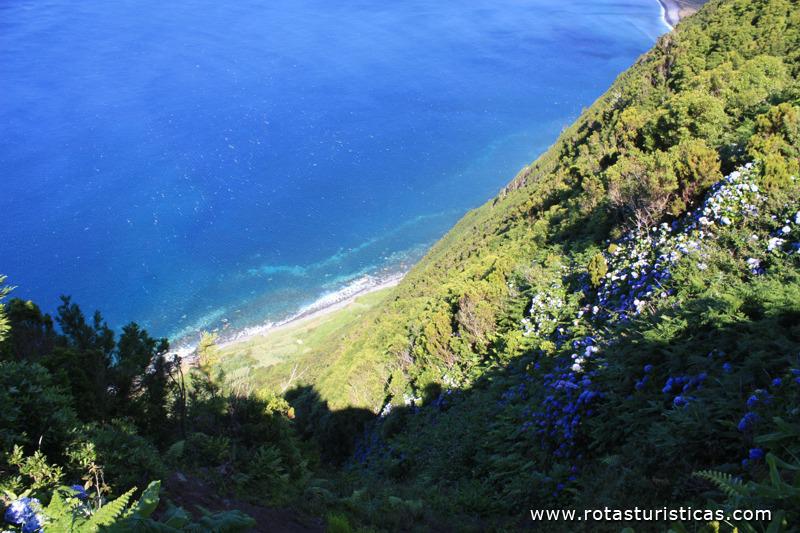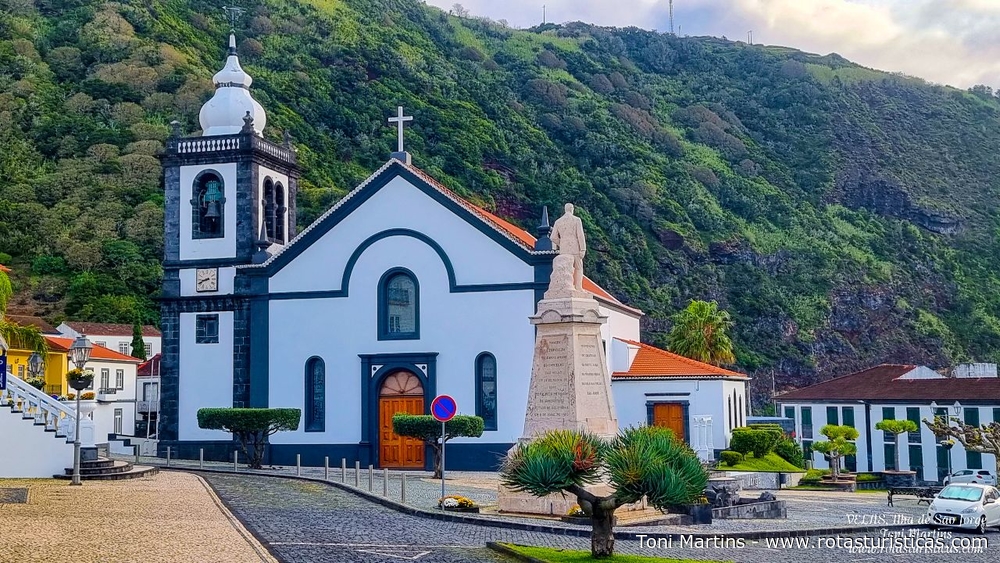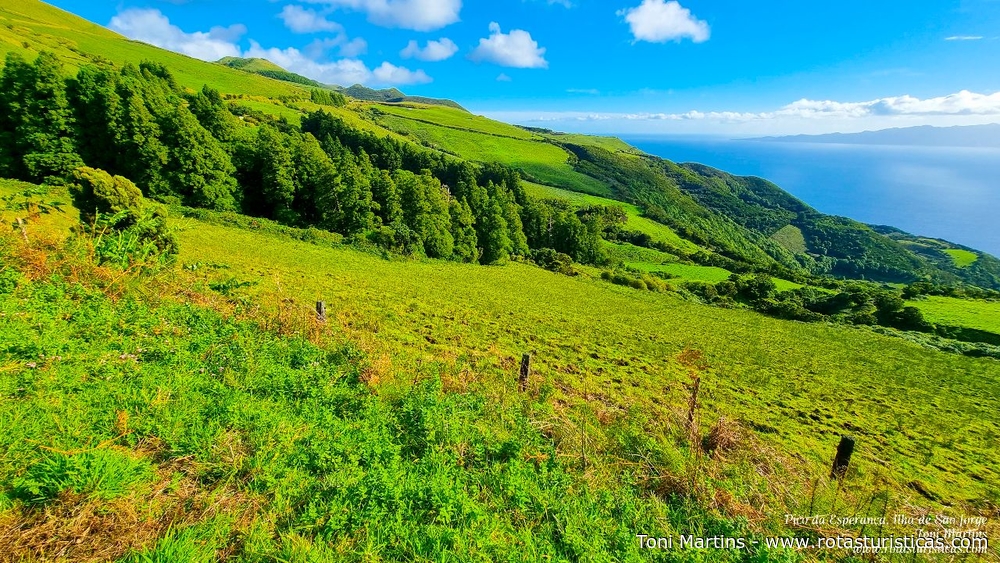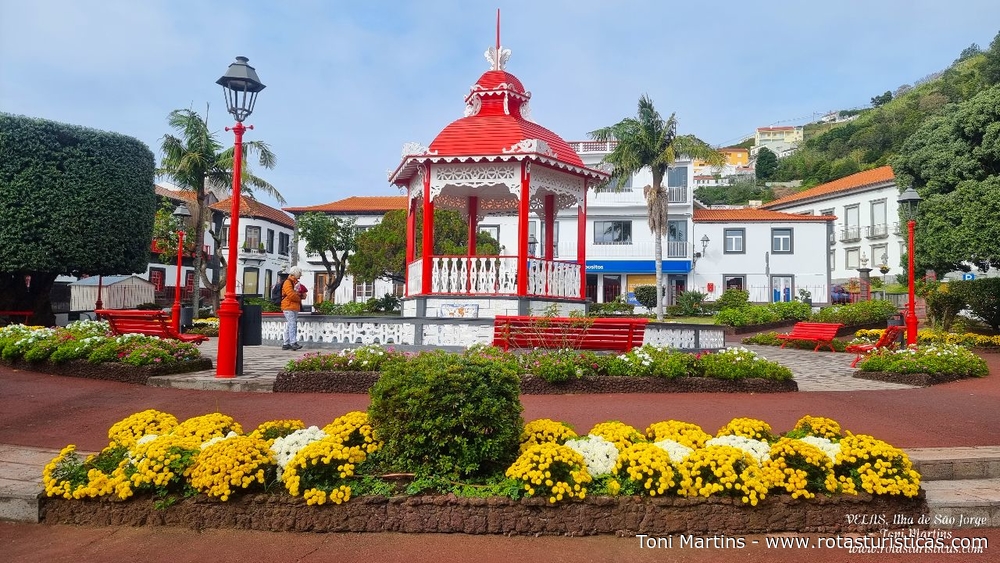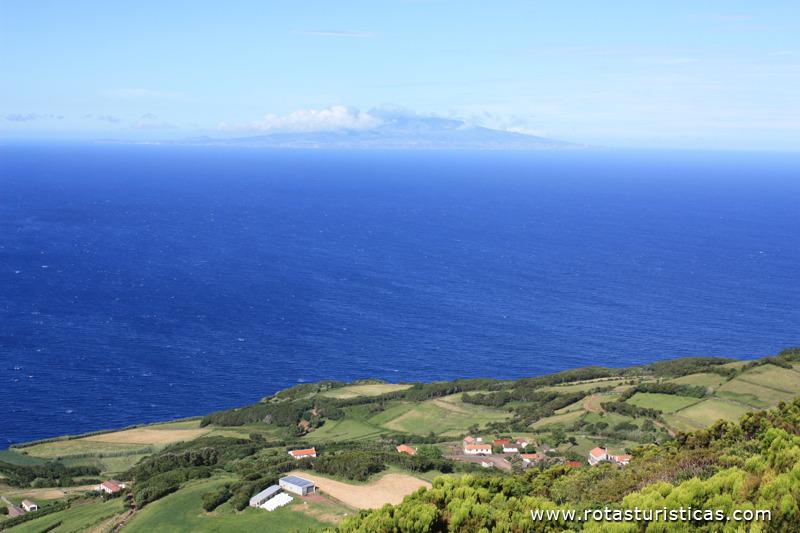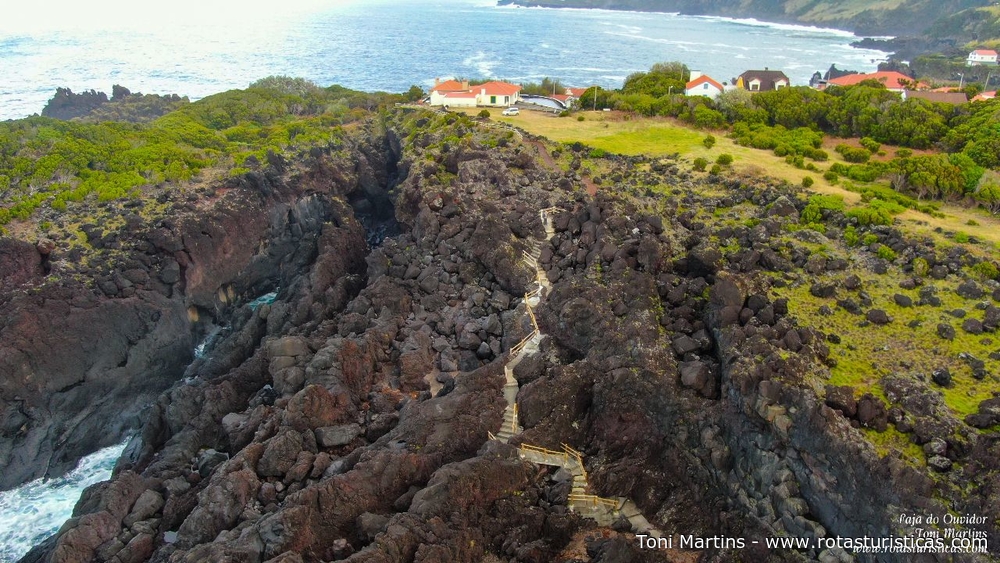Pictures of: São Jorge Island - Azores
Location map
Airports
Hotels and other Accommodation
What to visit
Where to Eat
World Nomads
The Travel Insurance with the largest coverage

The Travel Insurance with the largest coverage

São Jorge Island
The island of São Jorge is part of the Central Group of the Azores and is located in the center of this group of islands, a location that corresponds to the geometric center of the archipelago itself, being 37 km from Graciosa, 20 km from Pico, about 40 km from Terceira and 30 km from Faial. Its privileged location allows it to be observed from the other islands of the Central Group, giving the visitor, more than any other island, the strong impression of belonging to an archipelago.
The island has unique characteristics that begin by manifesting in the very elongated form it presents, reaching about 60 km in length to only about 7 km in maximum width. Viewed from afar, the tall silhouette of this island reminds us, as Raul Brandão (The Unknown Islands, 1926) has noted, the back of a large animal in the water. At its two ends, it is completed by two islets: the west, the Islet of Canalhoto, and the spring the Islet of the Topo. In its approximate area of 246 km2 live about 9,500 inhabitants, being the main municipalities Velas and Calheta.
São Jorge is distinguished by the magnificence of a morphology consisting of rugged coasts, surrounded by black and high cliffs, carved almost to the point, and a huge platform whose altitude varies between 300 and 800 meters. Its highest peak, Pico da Esperança, is 1,053 m, offering excellent views of the other islands of the Central Group. The north coast has a high and abrupt morphology, with cliffs struck by the sea, in contrast with the greater softness that characterizes the south coast. The wildest beauty of the north contrasts, therefore, with the softer effect of the south, brightened by the existence of waterfalls that precipitate in the Atlantic.
In the lowlands, the division of agricultural properties and the separation of cultures led to the cut of the territory in geometric terraces delineated by stone walls, tufts of hydrangeas or shrubs. The heather is one of the dominant presences in the design of its own landscape identity, in which the harmony between the stiffness of the black stone and the undulating movement of the fertile vegetation surprises.
The island has unique characteristics that begin by manifesting in the very elongated form it presents, reaching about 60 km in length to only about 7 km in maximum width. Viewed from afar, the tall silhouette of this island reminds us, as Raul Brandão (The Unknown Islands, 1926) has noted, the back of a large animal in the water. At its two ends, it is completed by two islets: the west, the Islet of Canalhoto, and the spring the Islet of the Topo. In its approximate area of 246 km2 live about 9,500 inhabitants, being the main municipalities Velas and Calheta.
São Jorge is distinguished by the magnificence of a morphology consisting of rugged coasts, surrounded by black and high cliffs, carved almost to the point, and a huge platform whose altitude varies between 300 and 800 meters. Its highest peak, Pico da Esperança, is 1,053 m, offering excellent views of the other islands of the Central Group. The north coast has a high and abrupt morphology, with cliffs struck by the sea, in contrast with the greater softness that characterizes the south coast. The wildest beauty of the north contrasts, therefore, with the softer effect of the south, brightened by the existence of waterfalls that precipitate in the Atlantic.
In the lowlands, the division of agricultural properties and the separation of cultures led to the cut of the territory in geometric terraces delineated by stone walls, tufts of hydrangeas or shrubs. The heather is one of the dominant presences in the design of its own landscape identity, in which the harmony between the stiffness of the black stone and the undulating movement of the fertile vegetation surprises.
Tourism
The Fajã da Caldeira do Santo Cristo, located on the north coast of the island, a protected nature reserve with a salt water lagoon and a small village;
The Topo islet, located at the eastern tip of the island, is also a natural reserve and shelter for numerous migratory species of seabirds;
A seaside trail, near the Urzelina, takes you to Furnas das Pombas, a curious volcanic rock formation that is populated by wild pigeons;
Urzelina, site where a tower is all that remains of an old church that was buried, when the Peak of Hope erupted in 1808;
Manadas - A picturesque village with attractive country houses, surrounded by orchards and fields, where you can visit the Church of Santa Barbara, built in the eighteenth century in Baroque style, and has a valuable collection of hand-painted tiles depicting scenes from the life of Santa Barbara.
The Topo islet, located at the eastern tip of the island, is also a natural reserve and shelter for numerous migratory species of seabirds;
A seaside trail, near the Urzelina, takes you to Furnas das Pombas, a curious volcanic rock formation that is populated by wild pigeons;
Urzelina, site where a tower is all that remains of an old church that was buried, when the Peak of Hope erupted in 1808;
Manadas - A picturesque village with attractive country houses, surrounded by orchards and fields, where you can visit the Church of Santa Barbara, built in the eighteenth century in Baroque style, and has a valuable collection of hand-painted tiles depicting scenes from the life of Santa Barbara.
Gastronomy
Meat and fish dishes, typical of Açoreana cuisine, are also present in São Jorge. However, São Jorge has exclusive rights to the clams, unique in flavor and only found in Caldeira de Santo Cristo. There is also a wide variety of candies such as "coscorões", "rosquilhas" of brandy, "suspiros", "Esquecidos", "bolo da véspera", "cavacas", "curd cake" and "sweet white".
The Island is by far better known for the famous Cheese of St. George. The green grass of the fields is transformed into milk by the healthy cows, from which it is produced this straw-yellow cheese, which is about the size of a wheel weighing between 7 and 10 kg. Cured for several months in rooms where temperature is kept constant, the cheese acquires a color of honey, being exported to several countries, where it is appreciated as appetizer or dessert, by unique spicy taste.
The Island is by far better known for the famous Cheese of St. George. The green grass of the fields is transformed into milk by the healthy cows, from which it is produced this straw-yellow cheese, which is about the size of a wheel weighing between 7 and 10 kg. Cured for several months in rooms where temperature is kept constant, the cheese acquires a color of honey, being exported to several countries, where it is appreciated as appetizer or dessert, by unique spicy taste.
Weather
Like most Azorean islands, São Jorge is influenced by the Gulf Stream and a center of high pressure. These two elements contribute to a trend towards moderate air temperatures between 14 ° C and 24 ° C, and to the occurrence of Atlantic storms in winter, the height of the year in which there is also a high rate of precipitation. The high and mountainous morphology of the island determines the action of strong winds and high indices of humidity and rainfall.
Other tourist destinations in:
Portugal
Portugal
Other world tourist destinations
Why to book with
The best prices
Our partnerships with the world´s largest operators offer research on the best market prices.
More options
At Rotas Turisticos you can book the hotel, buy the air ticket, book the transfer from the airport to the hotel and vice versa, book the local excursions, rent the car, take travel insurance and consult the places to visit and where to go.
Holiday Tips & Destinations
Hundreds of holiday destinations with all the options that allow you to easily choose the destination that best suits your dream vacation.
Links

